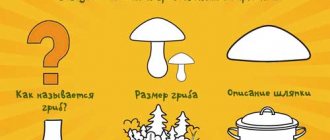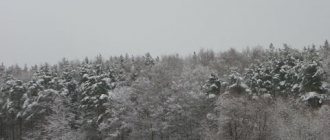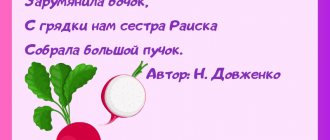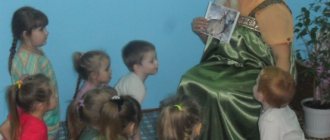Project "Where the book came from"
author:
Gagarina Galina Anatolevna
senior teacher of MBDOU "Kindergarten No. 25 in Vyborg"
Novikova Alexandra Alekseevna
teacher at MBDOU "Kindergarten No. 25 in Vyborg"
Project "Where the book came from"
Municipal budgetary preschool educational institution
"Kindergarten No. 25 in Vyborg"
Educational research project
"Where the Book Came From"
Prepared by: senior teacher
Gagarina Galina Anatolevna
teacher
Novikova Alexandra Alekseevna
Vyborg 2018
Explanatory note
Problem:
In the modern world, people are less and less likely to pick up a book, read them, and even less think about how a book is born. Book culture is changing radically these days. The main reason is the development of science and modern technologies, the emergence of new methods of obtaining information. Reading books and reading culture is a pressing problem.
Project type:
educational and research
Project duration:
short-term (1 week)
Project goal (for the teacher):
To create conditions for the development of cognitive and creative abilities, to maximally enrich children’s knowledge and ideas about how a book is created.
Project objectives:
- Introduce children to the history of the creation of the first books. Enrich children's understanding of how a book is made from what material
- Expand knowledge about professions related to books, librarian, writer, editor, illustrator
- Bring children to understand that books must be treated with care so that the books live as long as possible.
- Develop the ability, together with parents, to find an original solution when creating pages of a handmade book.
- Develop the ability to communicate freely with adults and children, to show friendly relations with each other
- To foster in children an interest and love for books.
Project goal (for children):
Find out how a book is created, what professions people help it appear on bookshelves.
Expected result:
—
children's interest in reading fiction will increase;
growth of positive dynamics in the formation of children's ideas about the book and the rules for handling it;
— the level of creativity in artistic, speech, productive and gaming activities will increase;
— the level of parents’ competence in matters of introducing children to reading fiction through cognitive and research activities will increase.
Project participants:
children of senior preschool age, parents, teachers,
Motivation of children and parents (immersion in the project):
The teacher lays out several objects made of wood on the table, invites the children to look at them and say what unites them. Do you know why there is a book among them? Do you want to know how books appear, where they came from?
| Child planning by (shape: general circle) | Creating conditions through the organization of a subject-spatial developmental environment according to activity centers | Joint forms of educational activities between adults and children | Results of the day | ||
| Monday Let's find out where the book came from, the creation of the book | Exhibition of books, portraits of writers Stones, tablets, birch bark, pieces of leather, fabric, sheets of paper, paints, brushes, felt-tip pens | Conversation about the history of book creation with presentation "Where the Book Came From" Reading the story by A. Barkov and R. Suryaninov “Where the book came from” Drawing a picture on stones, birch bark | Quiz: “All about books” Making a book cover | ||
| Tuesday Let's learn about the properties of paper | Collection of paper, collection of paper, algorithm for creating a book, waste and natural material, plasticine Paper napkins of different colors, bowl of water, sieve, bucket, board for rolling out paper, rolling pin | Conducting experiments Paper cuts, tears, wrinkles, gets wet, absorbs oil, makes sound, flies, burns Conversation “What can a book be made from?” “What kind of paper can you make a book from?” “What properties of paper do you know?” | Making paper from napkins | ||
| Wednesday Let's find out who illustrators are | Illustrations for books Paints, markers, colors. pencils, paper | Conversation about the diversity of artistic genres D/game: “Genres of books”, “Guess the title of the book”, “One - many” Developing educational situation: “Who and how they create pictures in books.” Conversation “Why do we need illustrations in books?” | Drawing an illustration for your favorite fairy tale | ||
| Thursday Let's find out who writes books | Attributes for conducting the role-playing game “Publishing House”, “Library” Algorithm for making a bookmark | Solving a problem situation: “Books have disappeared from the group” Conversation “What writers do you know?” Reading a poem by S.Ya. Marshak "How the book was printed." Conversation “The librarian profession, what do you know about it?” | Role-playing game “Publishing House”, “Library” Making a bookmark for a book | ||
| Friday Let's find out what a book is made of and how it is created | Paper collection, book making algorithm Paper, glue, scissors | Conversation about the structure of the book (cover, pages, binding, illustrations) With presentation Memorizing the poem by Valentin Berestov “How to be able to read well” Repairing damaged books Physical school | Making a baby book | ||
| Interaction with parents | |||||
| Questionnaire for parents “Child and Book” Let's compose the story “My favorite book” Consultations, folders for parents: “Smart books for smart kids”, “Which book to choose for a child”, “Recommendation list for shared reading with children of senior preschool age” Weekend excursion: Library, bookstore. Making little books - “a book about a book” | |||||
| Interaction with social partners. Excursion to the library “What is illustration?” | |||||
| Note “Literary Minute” is held every day. Reading the story “Where the book came from” by A. Barkov and R. Suryaninov, poem by S.Ya. Marshak “How they printed a book”, E. Tvorogova “The Tale of Books”, L. Potsepun the fairy tale “The History of a Book”, V. Gaevskaya “In the zoo they gave all the monkeys colorful books” | |||||
| What new did you learn? — we find out where the book came from, the creation of the book; — learn about the properties of paper; — find out who illustrators are; — find out who writes books; — find out what a book is made of and how it is created | Our successes We made a little book, conducted interesting experiments, made bookmarks for books, felt like illustrators and writers. | What else do we want to know? — where did the fairy tale come from? - what kind of fairy tales are there? - What is an encyclopedia? | |||
Project "Where the book came from"
ABC School
Objectives: to introduce children to the process of making a book; cultivate a sense of caring for books.
Class progress
- Reading poems. Riddles on the topic.
Teacher.
Guess: Not a bush, but with leaves, Not a shirt, but sewn, Not a person, but a story. (Book.)
– Name your favorite books. The teacher (student) reads a poem.
MY FRIEND
A good book, my companion, my friend, Leisure time can be interesting with you. We are having a great time together, And we are slowly carrying on our conversation...
You tell me about the deeds of daredevils, About evil enemies and funny eccentrics, About the secrets of the Earth and the movements of the planets - There is nothing incomprehensible with you,
You teach to be truthful and valiant, to understand Nature, to understand and love people. I cherish you, I take care of you, I cannot live without a good book.
N. Naydenova
- Teacher's story using illustrations.
All these books were born in a dense forest. At first there was a small pine tree, then it became a pine tree, and as the years passed, the tops of the pine tree reached towards the sun. But one day, lumberjacks came into the forest and cut down this mighty tree. A tractor is in a hurry to help the loggers; in the taiga it is called a forest all-terrain vehicle. Lumberjacks cut off branches, tie them, and tie the trunks tightly with iron ropes - cables. The forest all-terrain vehicle will shudder and puff and pull its heavy load towards the river.
The river is the most spacious road for the forest. Like huge fish, logs are swimming along it downstream. It seems as if the entire river is loaded with forests. Sometimes logs collide, cling to each other, and form jams. And to avoid congestion, raftsmen keep a vigilant eye on the movement of the forest. Strong, brave” skillful people. They swim up to the forest jam in motor boats and use long hooks with sharp tips to push and disperse the interlocking logs. And so the trunks again continue their path along the deep, wide road. The blue road will lead the trunks to the plant. They will be used to make paper. Here the trunks move from workshop to workshop. The trees there are sawed and ground into sawdust. Next, it is boiled to obtain a fibrous mass similar to batter. The machines pour and roll out the paper dough, then the strips are turned into paper. An endless ribbon of paper crawls out of the machine and is wound into huge paper rolls.
- How can you make a book out of rolls?
- I need to write a book. Who will write the book?
Writers need to know a lot to write an interesting book. And to make the book very colorful, more work needs to be done by professionals.
-To whom?
Long ago, in the old days, books were written by hand. It was rare and highly valued. Then people thought: “After all, many people want to read the book. How can I help propagate a book?”
Now the book is not copied by hand, but printed in a printing house. Do you have textbooks? They are all the same. They were made in a printing house.
Printing house - book factory. Like any factory, there are many workshops here. In one workshop they prepare paper, in another - paints, and in each workshop - machines. Now books are made using machines. Blank white paper goes into the printing machine and comes out with text and pictures. Next, you need to fold the sheets into a notebook - fold them, as they say in the printing house, select them correctly, the pages should go one after another. The book still has a long way to go until it reaches the machine that makes the cover for it.
Then the books end up in a bookstore or library.
This is how long a book goes to turn from wood into a book. This is a lot of work by people, and we must respect this work and take care of the book.
- Dramatization of a fable*.
TWO BOOKS
One day two books met and talked to each other. - Well, how are you doing? -One asked the other.
- Oh, honey, I’m ashamed in front of the class, My owner tore out the covers with meat! What about the covers... I tore off the pages! He makes boats and rafts from them
And doves... I'm afraid the leaves will become snakes, Then I'll fly into the clouds! Are your sides intact?
- Your torment is not familiar to me, I don’t remember such a day, So that, without washing your hands clean, a student sat down to read me! And look at my pieces of paper, You won’t see any inky dots on them.
I’m silent about the blots, - It’s indecent to even talk about them... But I teach him too, Not just any way, but “excellent”.
- Well, mine barely rides in grades and even got a grade that week... There is no riddle in the fable: books and notebooks will tell you straight out what kind of student you are.
HOW THE BOOK APPEARED
April 23 is World Book Day, we want to tell you about how the book came into being. Her story is complex and interesting. So, are you ready to take your children on an exciting journey into the history of books?
There was a time when there were no books at all on our land. And in order to remember important information, people made notches in trees, on the walls of caves, and tied knots in a rope. There was no writing at that time either, but people knew how to draw. In their drawings they reflected the main events of their lives. The first books were so unusual and different from modern books.
Over time, people learned to use clay. It was very convenient to write inscriptions on raw clay; then these tablets were fired in a kiln, and they became light and durable. Clay books could consist of hundreds of such tablets. They were stored in a wooden box.
In Ancient Egypt, Rome and Greece, they learned to make books from papyrus. To do this, reed stems were cut into strips, soaked in water, and then glued together. They wrote on papyrus with a wooden stick or brush, and the paint was made from charcoal mixed with resin. The papyrus was then wound around wooden or bone rods. The result was a scroll. But over time, the papyrus began to crumble or deteriorate from moisture.
And then people invented a new material for writing - parchment, which was made from animal skin.
But this method of making books was very expensive, so poor people could not use it. They wrote on birch bark (specially treated birch bark). This is where the expression “birch bark letter” came from.
And only in the 10th century did paper appear.
It is said that the first sheet of paper was made in China. Paper turned out to be a convenient material for writing, and its production was much simpler and also cheaper than other methods.
Modern paper is made from wood. And in order for a tree to turn into a snow-white leaf, you have to work hard: lumberjacks cut down trees, raftsmen float them on water, then the logs are sent to a wood processing plant, where the wood is cleaned, sawn, softened and even boiled. The resulting fibrous mass is mixed with chalk and sent to a special machine, from which the finished paper crawls out.
This is such a long and difficult path for the book!
Subscribe to our Yandex.Zen channel, where you will find other useful articles for children and parents. We have launched Telegram - join if this format is more convenient for you.
Interesting on the topic:
8 “OTHER” DISNEY CARTOON BOOKS
Cookie Policy
The paintings of Sergei Dreyden, presented at his anniversary exhibition, according to art critics, became an event in the world of art and... surprisingly coincided with the famous lines of I. Brodsky, and became an illustration for them. The book is addressed to both small and large readers. Joseph Aleksandrovich Brodsky is a Russian poet, American essayist, and winner of the 1987 Nobel Prize in Literature. Born May 24, 1940. In 1942, after the first winter of the siege, he and his mother left for the evacuation of Cherepovets, returning to Leningrad in 1944. In 1947 I went to school No. 203 on Kirochnaya Street, building 8 (then Saltykov-Shchedrin Street). In 1950 he moved to school No. 196 on Mokhovaya Street, in 1953 he went to the 7th grade at school No. 181 on Solyany Lane. Without finishing school, he started working. In 1955, the Brodsky family received “one and a half rooms” in the Muruzi House on the corner of Liteiny Prospect and Pestel Street, where the poet lived until his departure from Russia in May 1972. Sergei Simonovich Dreyden is a Russian theater and film actor, artist. Winner of two national theater awards “Golden Mask” (2000, 2001), three highest theater awards of St. Petersburg “Golden Sofit” (1998, 2011, 2012) and the Russian Academy of Cinematographic Arts “Nika” award (2010). Born on September 14, 1941 in Novosibirsk, where the family of theater critic Simon Dreyden and actress Zinaida Dontsova was evacuated. Parents and Sergei returned to Leningrad in 1948, where the boy went to school No. 203 on Kirochnaya Street in 1949. In post-war Leningrad, the future poet and the future actor lived nearby: the Dreidens’ address was Tchaikovsky Street, house 43, literally two blocks along Liteiny Prospekt from the Muruzi House. Drayden was the first performer of the role of Tullius in the first Russian production of Brodsky's play "Marble" in art in 1996, the year of the poet's death. At the anniversary evening of actor Sergei Dreyden in the art room, where, among other things, his drawings from the “memory paintings” series were exhibited, the hero of the occasion read Joseph Brodsky’s poem “Where Winter Came to Us...” (1962). This is how the idea for this short book was born.
Where winter came to us from, you don’t know, no one knows. Everything fell silent. She herself does not unclench her cold lips. She is silent. Suddenly, suddenly, persistence will not break her. That’s why you catch every sound so greedily in winter. The rustling of the wind against the trunks, the rustling of roofs under the clouds, then, like rotten floors, the creaking of snow under shoes, and then the creaking and knocking of shovels, and dim smoke, and the roar of dawn... But even the quiet snowfall, where it came from, will not give an answer. And you, entering your warm house, running up to yourself, pray tell, didn’t you at least once think that somewhere here she was hiding: in a flight of stairs, in a wall, between bricks, below under a warehouse, or maybe , in the river, at the bottom, where you cannot penetrate with your eyes. Perhaps there, in the night courtyards, in the attics and in dusty chandeliers, in boarded doors, in damp basements, in our feelings, in the closets of those where trash is dumped... But it’s clear that she was cramped there, she grew in all corners and filled everything. This must be just nonsense, an accumulation of thoughts and unclear words, she must have come from the mountains, descended to us from the beautiful peaks: there is eternal ice, there is eternal snow, there is an eternal wind that gnaws at the rocks, man cannot climb there, and The eagle cannot fly. It must be so. Does it really matter when you have to raise the gate, but isn’t it the same thing: there’s shadow and eternal cold in the passage? There is a union and connection and similarity between them - albeit completely mute. Having come together, united, it is very easy for them to become winter. Deeds that do not know kinship, and clouds in the blue of heaven, all objects and substances and feelings, different in strength, the elements of heat and water, carried away by the inner play, give over time fruits that are at times completely unexpected. Sometimes ice is stronger than fire, sometimes winter is longer than summer, sometimes night is longer than day and darkness is twice as strong as light; Sometimes the garden is huge and dense, but you can’t get any fruit at all... So beware of cold feelings, otherwise you’ll freeze. And all the people, and all the houses where it is still warm, will say: winter has come. But they won’t understand where it comes from.







